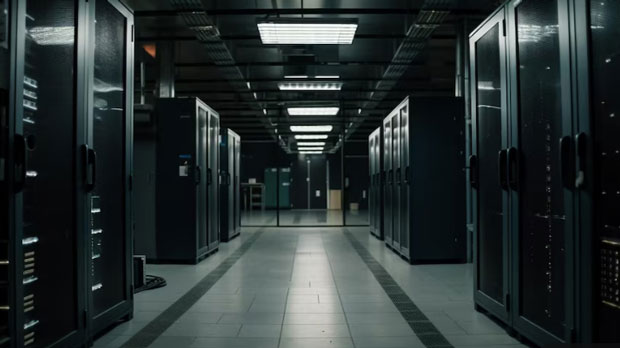In today’s digital world, privacy concerns and online anonymity have become significant issues for many internet users. One way to safeguard your online privacy is by using a proxy server to unblock websites while maintaining anonymity. Proxy servers act as intermediaries between your device and the websites you visit, allowing you to access content while masking your identity and location. This method helps protect your personal data and prevents tracking by third parties. In this article, we will explore how unblock websites proxies work for privacy protection and anonymous browsing, providing valuable insights into their functionality, benefits, and best practices. Understanding Proxies and How They WorkBefore diving into the specifics of how proxies contribute to privacy and anonymity, it's essential to understand what a proxy is and how it functions. A proxy server is an intermediary server that sits between a user’s device and the internet. When a user accesses a website through a proxy, the request is sent to the proxy server first, which then forwards the request to the website. The website responds to the proxy server, which subsequently sends the response back to the user.By routing traffic through a proxy, your IP address is hidden from the websites you visit. Instead of your device’s IP address, the website sees the proxy server’s IP address. This is an essential feature for privacy protection and anonymous browsing.Types of Proxies for Privacy and AnonymityThere are several types of proxies that can be used for different levels of privacy and anonymity:1. HTTP Proxy: This type of proxy only handles web traffic (HTTP/HTTPS). It is relatively fast but offers basic privacy features, such as hiding your IP address from websites. However, it does not encrypt your internet traffic.2. SOCKS Proxy: A SOCKS proxy is more versatile than an HTTP proxy as it can handle any type of internet traffic, not just web browsing. It is useful for applications beyond browsing, like email or instant messaging. However, like HTTP proxies, SOCKS proxies typically do not offer encryption, meaning your data may still be vulnerable.3. VPN (Virtual Private Network): While not strictly a proxy, a VPN can provide a higher level of privacy by encrypting all internet traffic. It hides your IP address and secures your connection, making it ideal for anonymous browsing.4. residential proxy: residential proxies use IP addresses assigned to real residential homes, making them harder to detect by websites as proxies. These are particularly useful for tasks like web scraping or bypassing geo-restrictions.Privacy Protection with ProxiesOne of the main reasons users opt for proxies is to enhance their online privacy. Proxies help achieve this in several ways:1. Anonymity: When you use a proxy, your real IP address is masked, meaning that the websites you visit cannot track your identity through your IP. This makes it harder for third parties, such as advertisers or hackers, to monitor your online activities.2. IP Address Masking: Proxies allow you to access websites from different geographical locations by routing your connection through servers in various countries. This not only hides your real IP address but also helps you access region-restricted content.3. Data Encryption: While some proxies, like HTTP proxies, do not encrypt traffic, others, such as VPNs, provide encryption to secure your data. This ensures that your browsing history, passwords, and other sensitive information are protected from eavesdroppers.4. Bypassing Censorship: In certain regions, internet censorship is widespread, and access to specific websites is restricted. By using proxies, you can circumvent these geo-blocks and censorships, ensuring your online activities are not limited by government-imposed restrictions.Anonymous Browsing with ProxiesApart from protecting privacy, proxies are also essential for maintaining anonymity online. Here are the ways in which proxies contribute to anonymous browsing:1. Masking Your Geolocation: Proxies can be used to change your virtual location. For example, if you're located in one country but want to access content available only in another country, you can route your traffic through a proxy server in that country. This helps avoid location-based restrictions and enhances anonymity.2. Hiding Online Behavior: Your browsing history is often tracked by websites, cookies, and other tracking technologies. Using a proxy prevents websites from directly linking your online activities to your real-world identity, as they only see the proxy server's details, not yours.3. Protection from Tracking: By regularly changing proxies or IP addresses, you can significantly reduce the risk of being tracked by marketers or surveillance programs. This is particularly useful for individuals who prioritize online anonymity for sensitive activities.4. Enhanced Security: Proxies add a layer of security to your online interactions. Even though proxies do not provide end-to-end encryption like VPNs, they still act as barriers, preventing your data from directly being exposed to the websites you visit.Best Practices for Using Proxies for Privacy and AnonymityWhile proxies offer several benefits, using them effectively requires following some best practices. Here are a few tips to ensure that you get the most out of your proxy for privacy protection and anonymous browsing:1. Choose the Right Proxy Type: Depending on your needs, select the appropriate type of proxy. If you require privacy and encryption, consider using a VPN. For general anonymity and web browsing, an HTTP or SOCKS proxy may suffice.2. Use High-Quality Proxies: Avoid free proxies, as they often come with security risks, such as malware or data leaks. Paid proxy services tend to offer more robust security features, faster speeds, and better reliability.3. Use Proxies with Multiple IPs: If you need to maintain anonymity for a longer period, consider rotating your IP addresses. This reduces the chances of being identified by websites or surveillance systems.4. Combine Proxies with Other Security Tools: To maximize your online security and anonymity, combine proxies with other tools like encryption software, ad-blockers, or anti-tracking extensions.5. Regularly Clear Your Cookies: Even though proxies mask your IP, cookies can still track your activities. Regularly clearing your browser cookies and cache helps ensure that your online identity remains anonymous.Using a proxy to unblock websites and protect your privacy is a powerful method for maintaining online anonymity and security. By understanding how proxies work, choosing the right type for your needs, and following best practices, you can significantly enhance your online privacy. While proxies are not foolproof, they are an essential tool for anyone who wants to keep their browsing habits private, avoid censorship, and safeguard personal information in an increasingly connected world.In conclusion, proxies provide a valuable means of privacy protection and anonymous browsing. By masking your IP address, encrypting your traffic (with VPNs), and enabling you to bypass geo-restrictions, proxies are indispensable for users who value their online security. However, it’s important to use proxies alongside other security measures for comprehensive protection.
Oct 16, 2025


































































